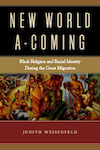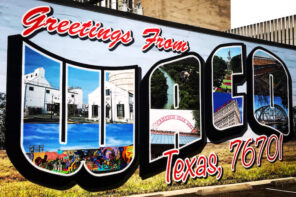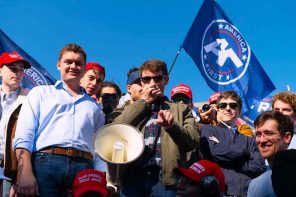What inspired you to write New World A-Coming: Black Religion and Racial Identity During the Great Migration?
I have been fascinated by the black new religious movements of the Great Migration era since I read Arthur Huff Fauset’s 1944 Black Gods of the Metropolis: Negro Religious Cults of the Urban North as an undergraduate. There has been a renewed scholarly interest in many of the groups he profiled that had emerged or expanded in the early twentieth-century urban North—Black Jews, the Moorish Science Temple, Holiness and Pentecostal churches, and Father Divine’s Peace Mission, for example—and attention to other groups he did not include in his study, such as the Nation of Islam. I thought the time was right to do a comparative study like his and revisit the period in which he conducted his ethnographic work, thinking across the groups about commonalities and differences.

New World A-Coming: Black Religion and Racial Identity During the Great Migration
Judith Weisenfeld
NYU Press
Feb 2017
What’s the most important take-home message for readers?
I want readers to come away with an understanding of the complexity with which religion and racial identity have been intertwined for people of African descent in the United States. Religious ideas, practices, and institutions have contributed to the production and maintenance of racial categories across American history and, with these groups—which I call religio-racial movements—we have rich cases of black people challenging and reformulating racial identity through religious means.
These were flamboyant, performative movements in which people took spiritual names, adopted new styles of dress and food practices, and ordered their families and communities in ways that sometimes chafed against social conventions.
By looking at how members of these groups understood religio-racial identity, we see that black people were not only subject to racial construction—that is, that white people produced and imposed categories and hierarchies—but contributed to racial thinking in American history, and religion was often central to these contributions. I also hope the book inspires readers to ask questions about the intersections of religion and race for other groups and at different moments in American history.
Is there anything you had to leave out?
I had to cut a good deal of material to get the book down to a reasonable length. Most of what I left out were short narrative sections that offered supporting examples supplementing other examples in the book, and the streamlining benefited the flow. Nevertheless, editing out stories of average members of the groups, even though many remained, was difficult for me because I was especially interested in highlighting their experiences.
What are some of the biggest misconceptions about your topic?
The characterization of these groups in earlier literature and in popular discourse as deviant “sects and cults,” their founders and leaders as fakers and charlatans, and the members as gullible dupes has obscured the complexity of the religious and social worlds participants created. Critics at the time and some scholars since have characterized leaders and members of the movements as pretending to be something they were obviously not: Asiatic Muslims, Ethiopian Hebrews, Moorish Muslims, or raceless children of Father Divine. When we focus on the religio-racial theologies and practices of the movements, we see their argument that Negro, the prevailing racial category of the time, is an invention and a product of slavery and how they sought new religious frameworks for understanding the black past and future.
Did you have a specific audience in mind when writing?
I want the book to be of interest and useful to a scholarly reader, but I had my undergraduate students in mind, particularly those I have taught in courses on African American religious history and religion and race in America. I wanted to engage them with a readable text that offers new theoretical insights about the co-constitution of race and religion in this period and that locates these religious groups, that highlight religious diversity, in a prominent place in the narrative of African American religious history.
Are you hoping to just inform readers? Entertain them? Piss them off?
My hope is that readers will be engaged by the stories of the leaders and members of these groups who were striving to remake the landscape of possibility for black flourishing. These were flamboyant, performative movements in which people took spiritual names, adopted new styles of dress and food practices, and ordered their families and communities in ways that sometimes chafed against social conventions. There’s a lot of playfulness on their part, mixed in with their serious work, and I hope I conveyed this as well.
What alternative title would you give the book?
Apostles of Race was the working title throughout the years of research and writing, drawn from a chapter title of journalist Roi Ottley’s 1943 New World A-Coming: Inside Black America in which he discussed culture, politics, religion, and social life among African Americans and Afro-Caribbean immigrants in Harlem. I used Ottley’s work as a primary source because of his interest in questions about black history and “the Negro’s future” in transnational perspective.
I came to think of the people I was writing about as “apostles of race” in offering new ways of thinking about the relationship between religio-racial identity. When I submitted the manuscript, my editor, Jennifer Hammer, and her colleagues at New York University Press, encouraged me to go with a title that emphasized the dynamic change the leaders and members wanted to effect, so we settled on New World A-Coming.
How do you feel about the cover?
I’m very happy with the cover, which features a mural by Charles White with major figures from African American history.
Is there a book out there you wish you had written? Which one? Why?
So many to choose from! I’ve been thinking a lot lately about Toni Morrison’s Playing in the Dark: Whiteness and the Literary Imagination (which she published 25 years ago) and James Baldwin’s The Devil Finds Work. Both are beautifully written and offer penetrating analysis of race, the arts, and American identity.
What’s your next book?
I’m just getting started on a book about the intersections of race, African American religions, and psychiatry in the late nineteenth and early twentieth century United States. I’m interested in the way that psychiatric theory framed African and African diaspora religious practices in relation to ideas about normal and disordered minds, and in the treatment black people deemed to be suffering from religiously grounded mental illness received in communities, courts, and mental institutions.





